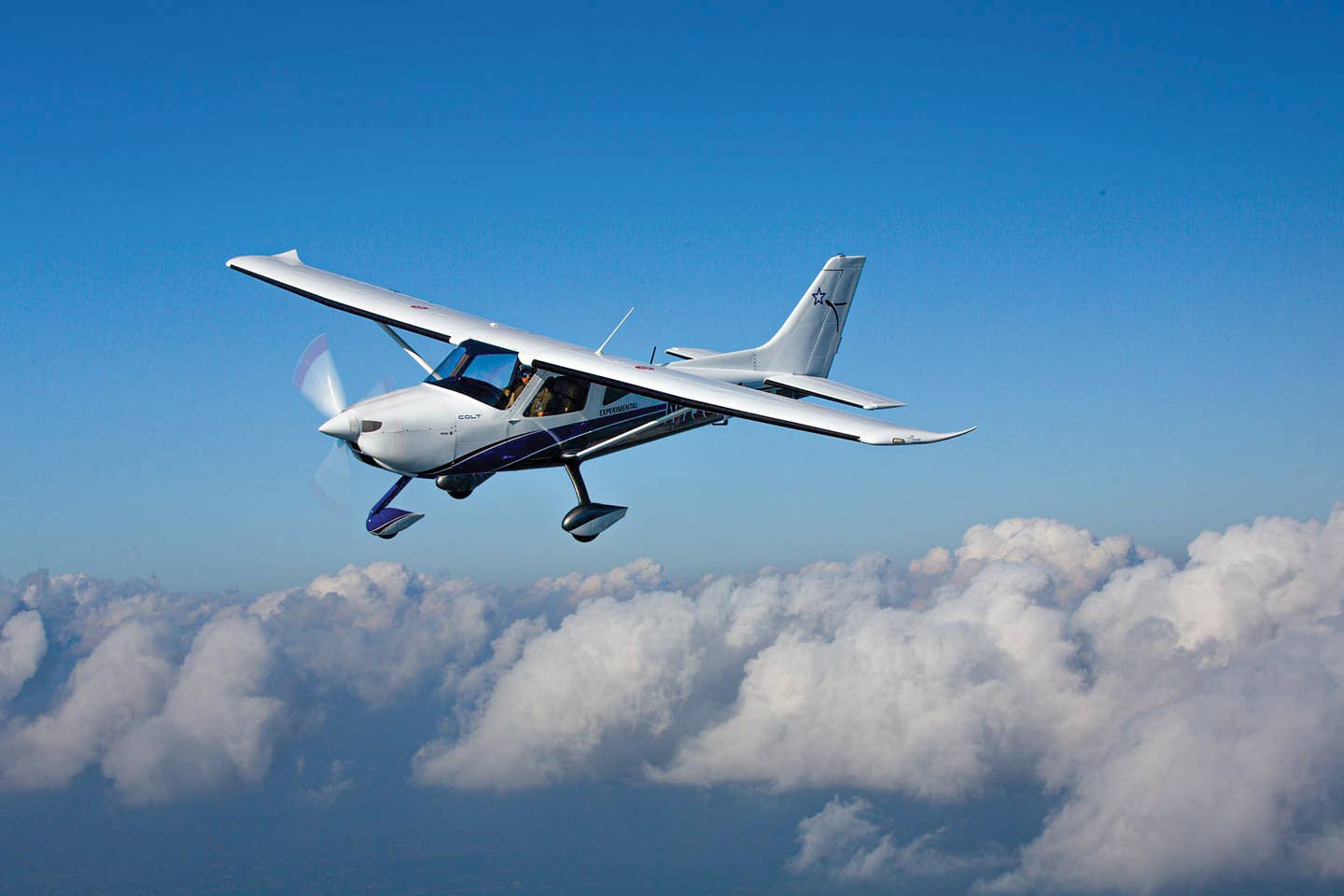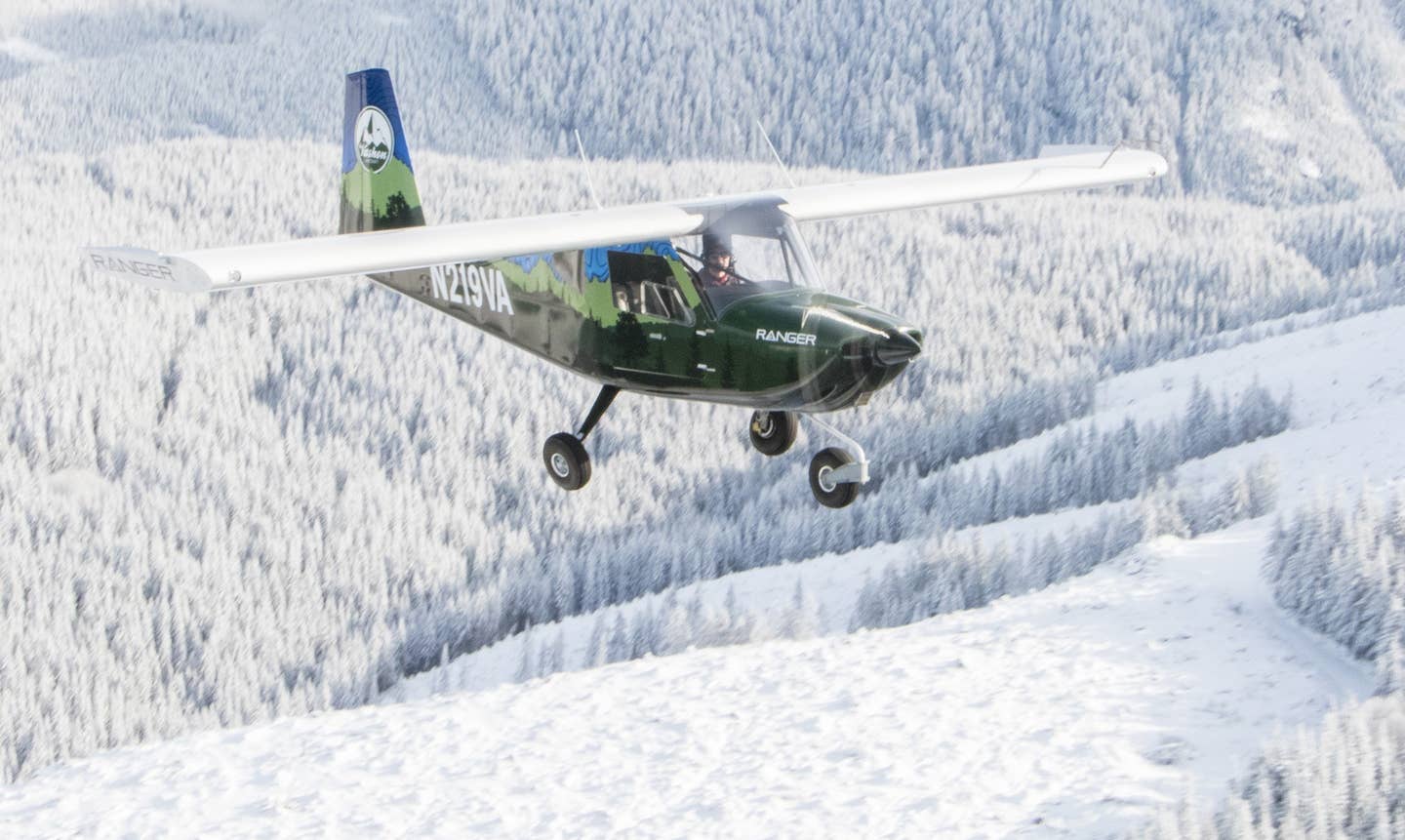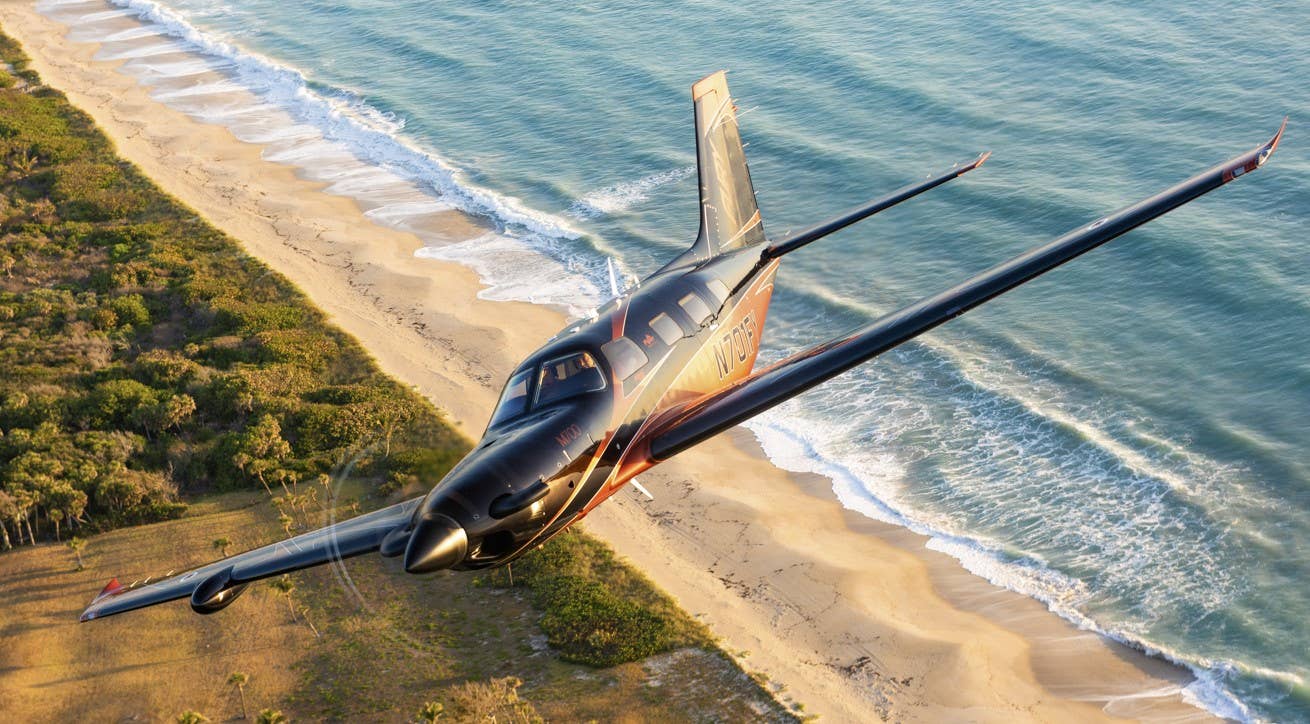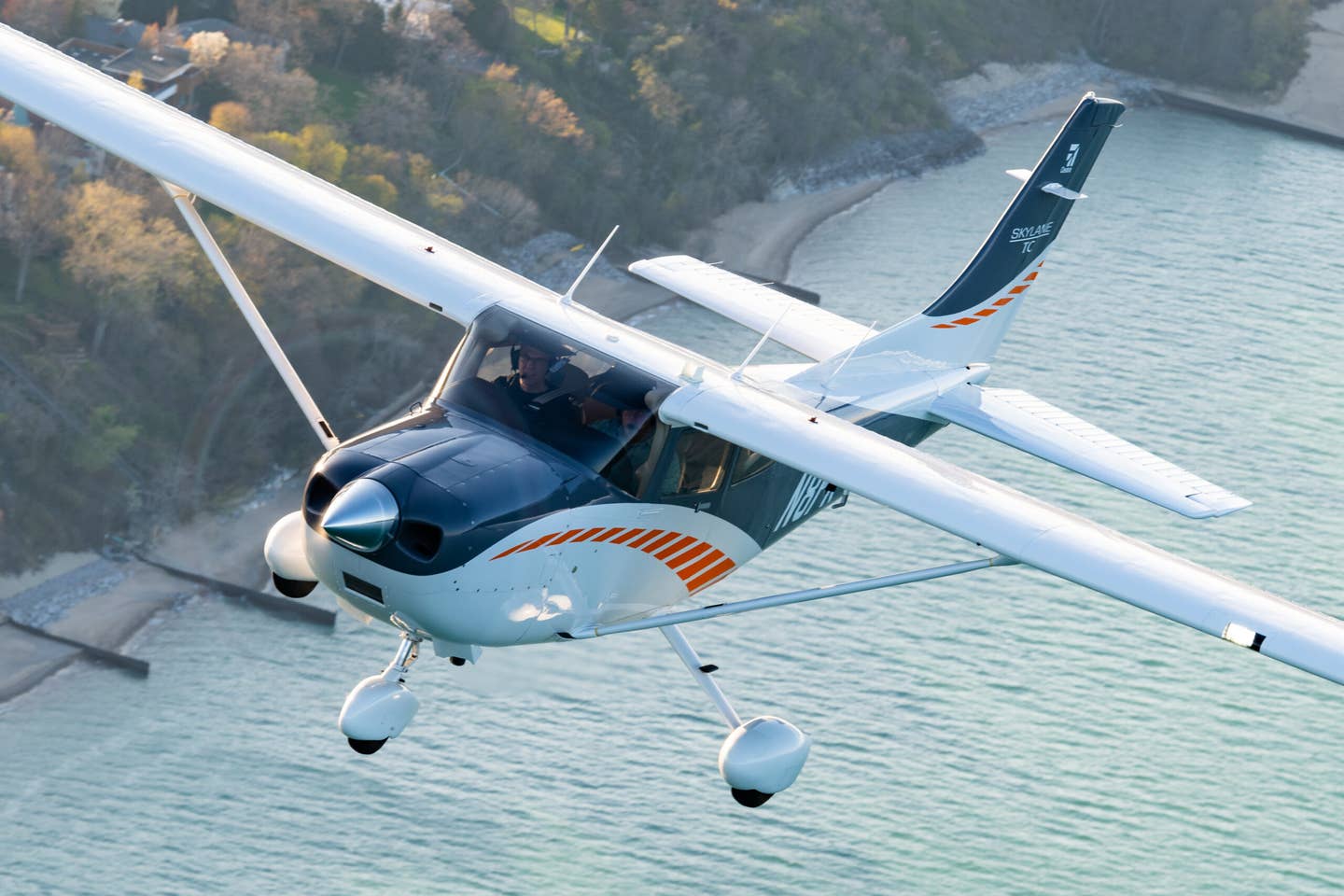
Texas Aircraft Manufacturing is based in Hondo, Texas. Courtesy Texas Aircraft
Dan Johnson told me, “The first light-sport airplane arrived in the U.S. in April 2005. The first two FAA-accepted special light-sport aircraft were announced…almost exactly 15 years ago.” Johnson reviews recreational aircraft and posts those reports on his site, bydanjohnson.com. A flight school needs to use an S-LSA in order to operate a light-sport aircraft in commercial operations—and that’s one of the target markets for Texas Aircraft Manufacturing’s new Rotax-powered Colt S and SL models.
The simple approval to operate the new two-place airplane at a flight school is not the only hurdle Texas Aircraft is facing. Johnson added, “Outside of the LSA world, many pilots I’ve spoken to believe these aircraft are too lightly built to hold up in flight training—one of the most demanding of all flight activities.”
Texas Aircraft Manufacturing, based at the former Hondo Army Airfield—now known as South Texas Regional Airport—about 35 miles west of San Antonio, remains focused on winning orders from flight schools. Considering the Colt is a brand-new design created with a modern glass cockpit and comfortable cabin, I had to wonder why a flight school wouldn’t consider it. After all, the primary new training airplanes being sold in the US today—the Cessna 172, designed in the 1950s, and the Piper PA-28, created in the early 1960s—took shape decades ago, though the avionics, engines and interiors have certainly been updated. To date, Piper has built nearly 40,000 of the four-place PA-28 model, which remains in production, while Cessna created about 31,500 of the two-place 100 hp 150s. Production of the 150/152 model ceased in 1985.
Plenty has happened to airframes and avionics in past 35 years—changes Texas Aircraft Manufacturing has taken advantage of, not to mention the expertise of the company’s design chief, Caio Jordão. The Colt SL, approved for both day and night VFR flight, includes a Dynon SkyView HDX avionics suite, including synthetic vision and an autopilot. The airplane retails for $167,000. Today, the almost-certificated Piper 100i, with Garmin G3X Touch avionics and a GFC 500 autopilot, sells for about $289,900; a four-place Cessna 172S—the smallest of that company’s single-engine airplanes, featuring Garmin’s G1000 NXi—lists for $411,000. Seems like a no-brainer if the decision to buy one of these technically advanced airplanes is simply based on price.
Texas Aircraft CEO Matheus Grande said, “The Colt is much less expensive to conduct any repair work on, especially if you’re working with an all-composite aircraft.” If a local school has the availability of automotive gas on site, so much the better, according to the Texas Aircraft folks, because using that fuel eliminates 50-hour oil changes and spark-plug cleaning made necessary by use of 100LL. The company believes a flight school with an in-house mechanic could easily tuck away just $23 per flight hour for maintenance, and views the Colt as a modern-day version of the Cessna 150.
One element of the earlier Cessna trainers that has not been completely remedied in the Colt—or any other similar two-place airplane—is useful load. Both the Colt and the 150 post an almost-identical useful load of 485 and 489 pounds, respectively. Fill up the Colt with fuel, and the weight of the people in the cabin will need to shrink pretty quickly. Scott Musselman, the company’s customer-engagement contact, said the Colt is a good cross-country airplane when a student or pilot is solo. With two average-size folks aboard, pilots should plan on carrying no more than about three hours of fuel with a reserve, approximately 18 gallons. Another concern for any flight school is the cost of insuring a fleet of Colts—especially in the current marketplace where rates have been rocketing skyward.
Jordão, a mechanic and pilot-turned-designer, hopes the company is a few steps ahead of the naysayers. Known to some as the god of the Brazilian LSA world, Jordão created the successful line of Inpaer airplanes in that country, such as the Conquest 180 that formed the basis for—and bears a striking resemblance to—the new Colt. There are approximately 400 Conquest 180s flying in Brazil.
Jordão’s experience in Brazil taught him that “if you build lighter landing gear, for instance, and something happens on landing, the whole airplane is usually destroyed.” (Because Jordão answered in Portuguese, my interview was translated by Scott Musselman.) The new Colt includes “seriously strong landing gear for that very reason,” Jordão said, adding that Colt customers will appreciate the strong airframe, which includes a chromoly survival cage that encases passengers, as well as a standard Galaxy Rescue Systems ballistic parachute on the SL (GRS chutes are built in the Czech Republic). Jordão said the Colt has a useful airframe life of 6,000 hours.
Texas Aircraft originally prototyped the new Colt airplane in Brazil beginning in 2016. All aircraft are now handcrafted to ASTM standards at the factory at the Hondo airport, where a large percentage of the men and women on the shop floor are U.S. military veterans recruited from nearby air bases such as Randolph and Kelly Field in San Antonio. Musselman said, “We’ve used a lot of that manufacturing history from Brazil to build an airplane that is really robust and is designed to exceed the ASTM standards while providing the stable controllable flight characteristics we’re looking for.” The Colt uses a traditional control yoke rather than the stick regularly seen in many LSAs.
So why build an LSA in the U.S. when building and shipping from Brazil would seem to be the cheaper solution? “Sixty percent of the world aircraft fleet is in the United States,” Matheus Grande said. There’s also a serious logistical issue with building in Brazil: “Materials like aluminum sheets, rivets and hardware for the Colt—like 85 percent of that—come from the USA. We wanted to build this aircraft with as much AN-labeled hardware as possible.” Importing it all to Brazil and then sending it all back to the U.S. as a finished airplane did not make good financial sense.
Musselman said Jordão and Grande’s “dream was also to have a business and a company in America. They love American ideals. Building an airplane made in America and certified under the FAA is a great advantage.” Texas Aircraft Manufacturing delivered its first Colt SL to a father-son duo in Florida. The aircraft should turn a few heads in that area because its painted in the University of Florida’s green-and-orange color scheme and sports a sassy-looking gator on the vertical stabilizer.
The Colt comes in two models, the S and the SL, both powered by a 100 hp Rotax 912 ULS engine attached to a Sterna three-blade propeller designed specifically for the Colt. The S model—aimed at the flight school market—includes a semi-cantilever, high-wing design; an all-aviation-grade-aluminum airframe with solid-metal rivets; a welded-chromoly passenger safety cell (GRS ballistic parachute optional) with dual-padded, leather- wrapped yokes and a handcrafted leather center console and upholstery; a Dynon SkyView HDX touchscreen avionics suite with synthetic vision; and lightweight, composite carbon-fiber cowling, fairings, wingtips and wheelpants. The SL—aimed at private-aircraft owners—includes the same features as the S but adds a two-axis autopilot with a level button, the GRS parachute as standard and a full-aircraft paint scheme in the customer’s choice of colors.
Right now, Texas Aircraft Manufacturing is focusing on sales local to the triangle formed by Houston, Dallas and San Antonio, but is also pursuing broker relationships. The company hopes to be building between two and four airframes each month by this summer. Musselman said, “The company wants to maintain enough materials on hand to build about eight aircraft,” something he believes is doable because inventory doesn’t depend on customer money to maintain production.
Grande spoke a bit to the Colt’s evolution. “In January 2017, we started the research and development on the Colt and figured Texas Aircraft would build a light-sport aircraft made of all aluminum with solid rivets and a primary-structure survival cell.” He said no other LSA matched those characteristics. “Those ingredients would make it possible for us to have an extremely reliable and robust aircraft. We also wanted a tough yet beautiful aircraft,” he said. “It’s not easy to get a beautiful, sleek design out of aluminum. Working with that metal makes life very difficult.” He and Jordão wanted to add a pinch of modernity to the aircraft, so all the engine cowling and fairings were made of carbon fiber.
Texas Aircraft’s in-house machinists spent a considerable amount of time creating their own equipment to carry out the required load tests. “We didn’t want to do anything with sandbags,” Grande said. “We wanted something extremely professional and reliable.” The company tested no fewer than 12 different wing designs before settling on the one that gave the aircraft the docile stall characteristics Jordão was after. The Colt’s fuel tanks are integral to the wing too.
“Our engineering work exceeded ASTM requirements…all of them,” Grande said. Light-sport-aircraft manufacturers like Texas Aircraft must comply with ASTM standards to create, and eventually certify, a special LSA. The ASTM process is sufficient to prove to the FAA that the aircraft is tough enough to certify as an S-LSA. When a manufacturer proves this through the data delivered to the FAA, the agency issues a special airworthiness certificate.
Going Airborne in the Colt
Scott Musselman also serves as one of company’s flight instructors and acted as my checkout pilot during our hour-long flight in N104TA. We caught up with the aircraft on the west ramp of Texas Aircraft’s hangar. The Colt is an eye-catcher because, with its sleek molded cowling, wheelpants and flared wingtips, this is clearly a brand-new airplane.
We began the preflight by opening the Colt’s big doors to flip on the master switch. That’s when it hits you that this airplane is a cut above many other LSAs, especially for tall pilots. Because the Colt’s wing strut attaches to the fuselage just aft of the door framework, the door will swing 180 degrees forward, allowing even a 6-foot-4-inch man to easily slide into the left seat like the Colt was made for him.
I flipped on the master, and Scott pointed out that the airplane’s vertical-stabilizer strobe began flashing as a signal to anyone nearby. Like most airplanes of this size, the best method to determine the fuel on board is to stand up on a stepladder and poke a graduated dipstick in each tank. The company provides one for each airplane. For today’s flight, Musselman and I planned to depart with about 15 gallons of fuel, which brought us up nearly to gross weight.
A couple items stood out during the preflight, such as the black tape that protects the wing’s leading edge from the dozens of nicks that traditionally plague any airplane. From a distance, it almost made the Colt look like it was carrying deicer boots, but it was merely window dressing to keep that wing looking factory-new. On the rear of the fuselage near the vertical-stabilizer attachment point, where everyone normally searches for the cotter pins and lug nuts that connect the elevator to the control rods, Texas Aircraft created a simple yet effective view window that make checking the actual control-rod attachments to the elevator a snap. Because the Rotax 912 is liquid-cooled, pilots must be sure to check the coolant level up front in addition to engine-oil quantity.
Once I settled into the comfy leather seats, I had a few minutes to figure out where all the necessary switches and levers were. I liked the visibility inside the Colt’s bright cockpit and how easily I was able to adjust the seat to allow me to plant my feet on the rudder pedals just the way I liked them. Having spent many hours in the right seat of a Cessna 150, one of my many memories was feeling as if I were sitting on the floor. That is not so in the Colt. The hand-stitched leather on the control wheel and center console gave the Colt the look of a much more expensive aircraft.
The Rotax started easily after first running the electric fuel pump for a few seconds. Once the engine fires, the electric pump is used only for emergencies, or if the fuel pressure varies at all. For pilots new to the Rotax, the choke may seem strange—unless the aviator also lives up north, where that’s a common feature on most snowblowers to aid cold-weather starts. There’s currently an engine limitation that requires the pilot to hold down the rpm to 2,500 until the oil temperature climbs above 120 degrees. Musselman said the engineers are thinking about changing the airplane’s oil cooler to eliminate the issue.
Before we taxied, Musselman showed me a couple of the cool features on the Dynon comm radios using the buttons marked “TWR,” “ATIS” and “GND.” Because the airplane knows where it is in the world, the pilot needs only to push TWR, for example, and the Dynon will auto-tune itself to the correct frequency. As we began our taxi to Hondo’s 6,002-foot Runway 17L, I realized what a vast yet quiet airport Texas Aircraft chose for its US headquarters. While the air was once abuzz with plenty of military-training flights, traffic around this noncontrolled field was almost nonexistent the day we flew. The people at Texas Aircraft say it’s a perfect location with plenty of open space to expand and little traffic to get in the way when they flight-test a new idea.
The Colt’s castering nosewheel doesn’t take long to get used to because the airplane uses traditional, very effective toe brakes. The oil temperature reached normal before we hit the end of the runway. Musselman said 10 degrees of flaps was the preferred takeoff setting, and after a brief run-up, I lined up with the runway centerline and brought the Rotax to full power. The Colt’s steering was solid, and in just a few seconds, I eased back on the control yoke at 50 knots—and we were off, having used about 600 to 700 feet of runway. Best angle-of-climb speed is 60 knots, and while the aircraft climbed very quickly, I preferred a slightly lower deck angle to be able to look out the windows for traffic. Best rate of climb is 64 knots. With an outside air temperature that day of 60 degrees Fahrenheit, I saw a climb rate of nearly 800 fpm. I eventually settled on 75 knots for most of the rest of the climb.
Even once the flaps were up, the airplane didn’t require much additional trim in the climb. I reached over to switch off the landing light until Musselman reminded me that there was no penalty in keeping them on because the lights were all LEDs. The Colt comes with left and right fuel tanks that require balancing, a function made easier with the reminder from the Dynon system every 30 minutes to switch tanks. I noticed that, even accelerating to 83 knots, we were climbing at 800 fpm and burning about 5.2 gph up to our cruise altitude. I pitched the nose over to level flight at 4,500 feet and pulled back the power to about 4,850 rpm. Again, the Colt demanded very little in the way of trim changes.
I performed a few clearing turns as we headed toward the Medina Lake area for some airwork. The Colt’s upper flap range begins at 75 knots, and Musselman said he can comfortably fly around at 45 knots all day long with the full 30 degrees of flaps deployed. The airplane was rock-steady. I pulled back the power to idle to see how long it took to slow the airplane and was surprised it actually took so long. Musselman said the glide ratio on the Colt is about 12-to-1. If the engine had quit, the pilots pegs the best glide speed of 60 knots. With flaps up, the Colt is limited to +4gs/-2gs.
The flap switch is spring-loaded, so I held it down for a count of four, which delivered the first 10 degrees. Using the same techniques a few additional times got us to full flaps. I tried some slow flight with full flaps at 50 knots. The Colt demanded about 3,850 rpm to hold 50.
I tried a go-around from slow flight with full flaps and found little pitch change, actually rather unusual for any airplane, as I added power and began eliminating the drag. I also tried a few clean stalls after the go-around, and as the angle of attack nears the stall, the electronic warning beeper increases in frequency. The break during a clean stall is noticeable but not anywhere near what I would call upsetting—but then again, I’m not a new pilot. I tried a few with full flaps, and it was much tougher to stall until I pulled back quickly on the yoke. The Colt’s stall speed with full flaps is 35 knots. Even then, the stall was pretty docile. The Cessna 150 would have had a much more pronounced break.
As the sun began setting toward the horizon, I realized the Colt’s interior lighting has the 150′s beat by quite a bit. Even during all the moving hands and elbows of airwork and time in the traffic pattern, there’s plenty of room to move around in the cockpit—thanks to the extra inches of cabin width. In the traffic pattern back at Hondo, the Colt required a power setting of about 3,600 rpm while burning about 3.5 gph. On final at 60 knots with full flaps, Musselman said I should try to slip the airplane if I needed it. It was also pretty docile here, and as I flared and reduced the power, the Colt settled nicely back onto Runway 17L.
Selling new piston-powered airplanes is always tough, but LSA sales people have their work cut out for them; the number of traditional, factory-built, single-engine piston aircraft sold in 2019 numbered just more than 1,100, while LSA sales hovered around 700. I wish I could convince our flying club to purchase a Colt SL. It would make a teriffic training airplane.
Texas Aircraft Colt Specs
| Price as equipped | $167,000 (SL), $156,000 (S) |
| Engine | Rotax 912 ULS |
| Propeller | Sterna three-blade composite |
| Seats | 1 pilot, 1 passenger |
| Length | 23 ft. 3 in. |
| Height | 7 ft. 7 in. |
| Interior width | 3 ft. 6 in. |
| Wingspan | 32 ft. 2 in. |
| Wing loading | 9.5 lb./sq. ft. |
| Max gross weight | 1,320 lbs. |
| Empty weight | 835 lbs. |
| Useful load | 485 lbs. |
| Total fuel | 31.7 gal. |
| Max usable fuel | 30.9 gal. |
| Fuel burn (75 percent) | 4.9 gph |
| Max rate of climb | 800 fpm |
| Max speed | 118 ktas |
| High-speed cruise | 110 ktas |
| Max range | 831 nm |
| Stall speed, flaps up | 44 kias |
| Stall speed, full flaps | 38 kias |
| Takeoff over 50 feet | 1,085 ft. |
| Landing over 50 feet | 1,044 ft. |
This story appeared in the May 2020 issue of Flying Magazine

Sign-up for newsletters & special offers!
Get the latest FLYING stories & special offers delivered directly to your inbox






